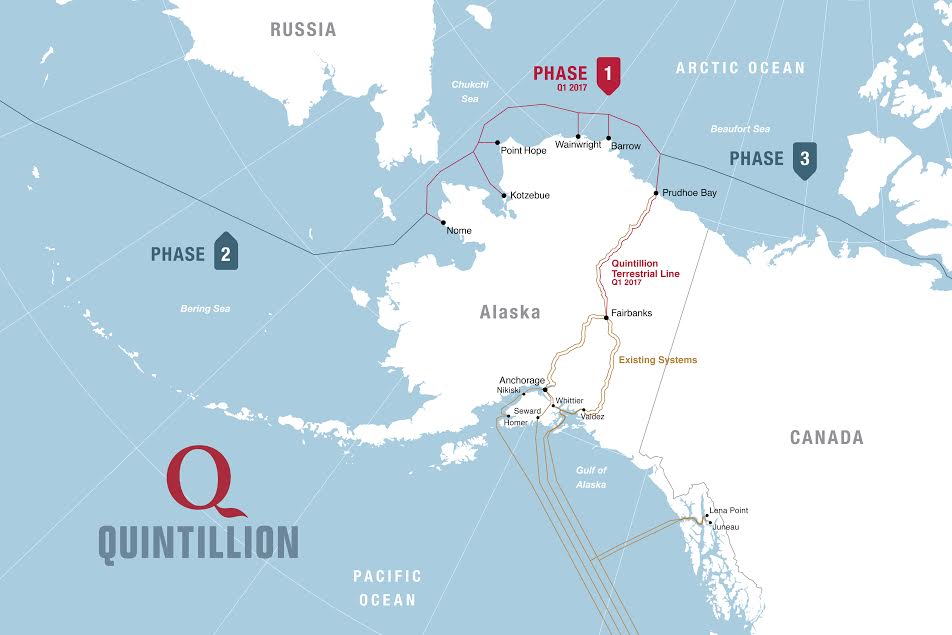Nome’s coast will get a little more crowded this summer, but it’s not dredging or your standard drilling that will add to the offshore activity.

“We’re not drilling for something, we’re drilling a path for something,” explained Kristina Woolston.
Woolston is Vice President of External Affairs for Quintillion, the company that is promising to bring high speed internet to western Alaska by 2017.
Quintillion has been working onshore since March, laying the fiber optic cable that will help deliver that internet to Nome’s more than 3,000 residents.
Woolston said the offshore portion of the project will happen sooner than expected.
“We actually are going to start a little bit early here in Nome than what we had thought because we have a vessel available and we also have some great open water,” Woolston said.
The onshore cable will connect to the subsea cable just a few miles east of downtown Nome. Woolston said Quiltillion chose that portion of the shoreline since it was free of gold dredging leases.
Quintillion will begin work laying subsea fiber optic cable off Nome’s coast the first week of July.
Emily Russell is the voice of Alaska morning news as Alaska Public Media’s Morning News Host and Producer.
Originally from the Adirondacks in upstate New York, Emily moved to Alaska in 2012. She skied her way through three winters in Fairbanks, earning her Master’s degree in Northern Studies from UAF.
Emily’s career in radio started in Nome in 2015, reporting for KNOM on everything from subsistence whale harvests to housing shortages in Native villages. She then worked for KCAW in Sitka, finally seeing what all the fuss with Southeast, Alaska was all about.
Back on the road system, Emily is looking forward to driving her Subaru around the region to hike, hunt, fish and pick as many berries as possible. When she’s not talking into the mic in the morning, Emily can be found reporting from the peaks above Anchorage to the rivers around Southcentral.




